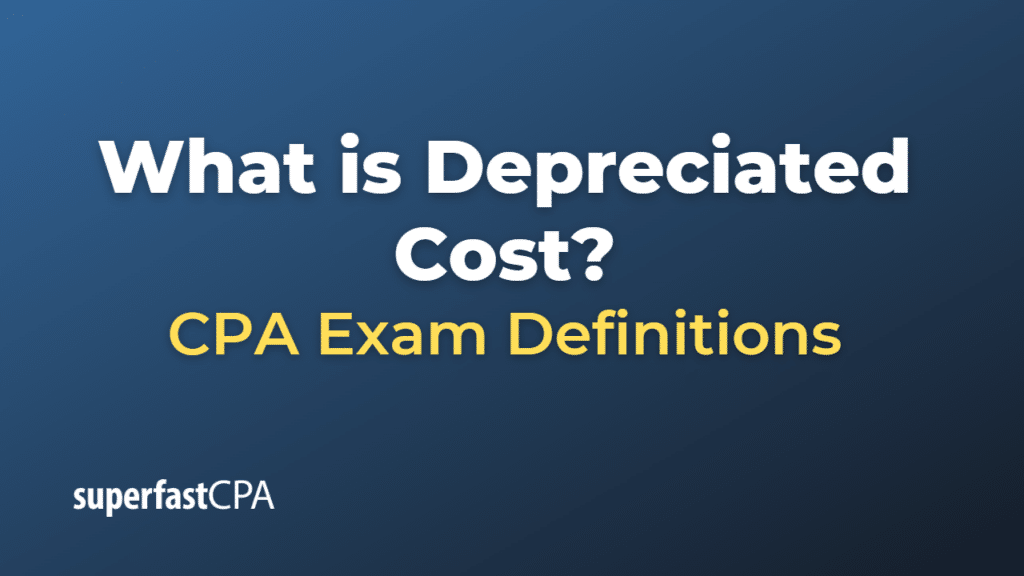Depreciated Cost
Depreciated cost, also known as net book value or carrying value, is the original cost of an asset minus the accumulated depreciation on that asset. Accumulated depreciation is the total depreciation that has been taken on an asset since it was put into service.
Depreciation is used in accounting to spread the cost of an asset over its useful life. This reflects the fact that assets generally generate revenue over a long period of time, not just when they’re purchased.
Depreciated cost is calculated using the following formula:
Depreciated Cost = Initial Cost of Asset – Accumulated Depreciation
This gives the current book value of the asset — the value at which it is currently carried on the company’s books. The book value decreases over time as more depreciation is accumulated.
It’s worth noting that the depreciated cost is not necessarily the market value of the asset — the price at which it could be sold. The market value could be higher or lower depending on factors like demand for the asset, its condition, and how quickly technology in its category is advancing.
Example of Depreciated Cost
Let’s take an example of a company that purchased a machine for $20,000. The machine has a useful life of 10 years and the company uses the straight-line method of depreciation. This means the machine would depreciate by $2,000 each year ($20,000 / 10 years).
If we want to know the depreciated cost of the machine at the end of year 3, we calculate it as follows:
Depreciated Cost = Initial Cost of Asset – Accumulated Depreciation
For the end of year 3, the accumulated depreciation would be $6,000 ($2,000 per year for 3 years). So the depreciated cost would be:
Depreciated Cost = $20,000 – $6,000 = $14,000
This means that at the end of year 3, the machine has a book value of $14,000 on the company’s balance sheet. This represents the portion of the machine’s original cost that has not yet been depreciated. As the machine is further depreciated in future years, its depreciated cost (book value) will continue to decrease.
Keep in mind that the depreciated cost is not necessarily the same as the machine’s market value. The market value might be higher or lower than the depreciated cost depending on factors like the machine’s condition, the demand for such machines, and so on.














